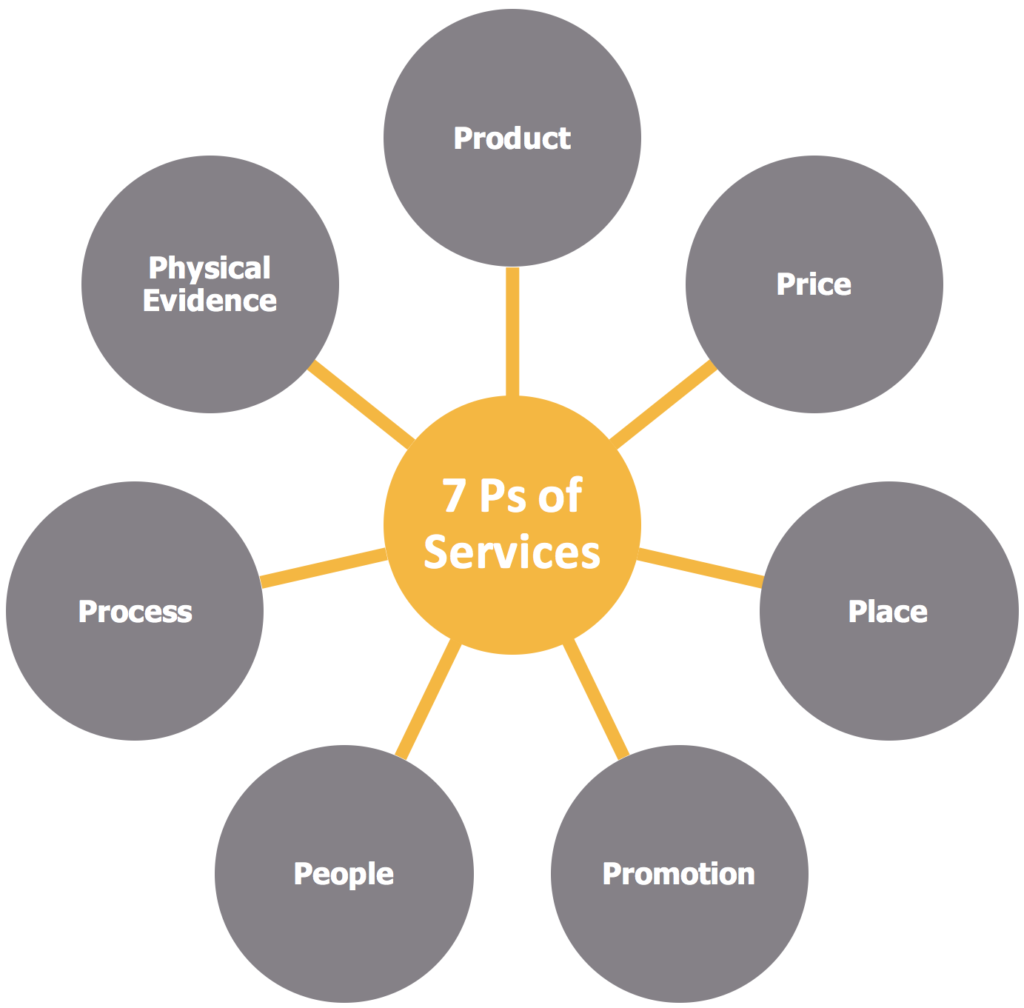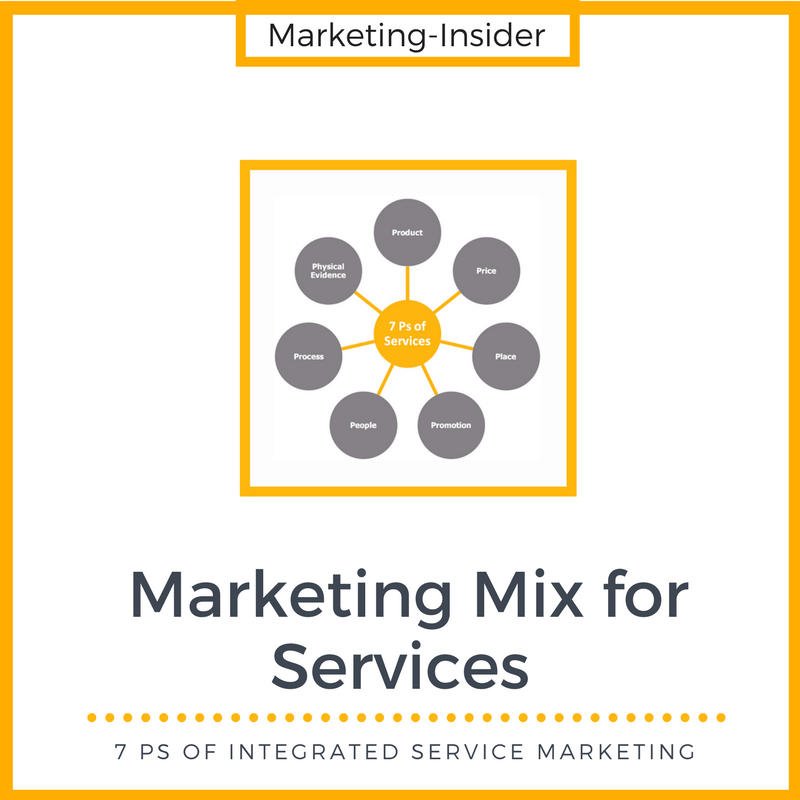Marketing activity is normally structured around the 4 Ps – product, price, promotion and place. That is, when discussing strategies to market manufactured goods, marketers usually address these four basic strategic elements. However, this is not sufficient when we are talking about service marketing. How does the marketing mix for services look like? Understand how the 4 Ps of the classic marketing max can be extended to yield a complete marketing mix for services.
3 additional Ps – 7 Ps as the Marketing Mix for Services
The 4 Ps, comprising product, price, place and promotion build the 4 critical pillars of every marketing strategy. However, the distinctive characteristics of services requires the addition of three more Ps – people, physical evidence and process. This is necessary as services differ strongly from products in their nature: aspects such as customer involvement in production and the importance of the time factor require that additional strategic elements are included to yield an exhaustive marketing mix for services.

Marketing Mix for Services – 7 Ps of Integrated Service Marketing
What is meant by each of them?
- People – the appearance and behavior of service personnel. People are the most important defining factor in a service environment: a service is obviously inseparable from the person providing it, which is different than in case of a tangible product. For instance, a restaurant is not only good because of good food, but because of a good service provided by its staff.
- Physical evidence – everything from the appearance, design, layout of the service setting, to aspects like brochures, equipment (the tangible parts of the actually intangible). Since services are intangible in nature, most service providers aim to incorporate certain tangible elements into the offering. This enables an enhanced customer experience. For instance, in a barber shop you usually will find well designed waiting areas with magazines, sofas etc. To return to the restaurant example, you may find that restaurants invest quite a lot in their interior design and decorations to offer a tangible experience to their customers.
- Process – how the service is delivered, the actual procedures and flow of activities. The process of service delivery is crucial since it ensures that the same standard is repeatedly delivered to customers. For this reason, most companies have something like a service blue print, lining out the details of the standardized service delivery process. For example, fast food chains have clearly specified processes for customer servicing, which may even include standardized phrases.
Each of these three extra Ps is of central importance in services. They all refer to criteria that customers rely on in judging the quality and overall image.
